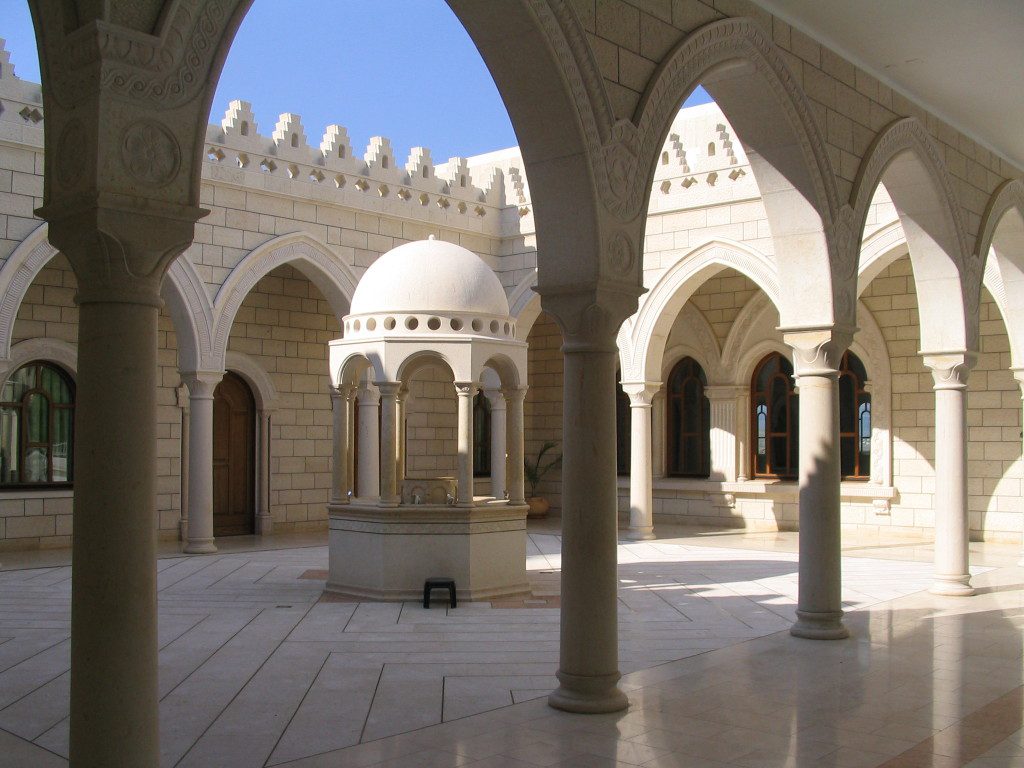Tomb of Jethro
April 24th 2014
 In the Biblical Book of Exodus, Jethro is identified as the father-in-law of Moses, and as such, his burial place is a holy site to Jews, Christians and Muslims alike. But Druze tradition considers Jethro to be a prophet in his own right, ascribing major significance to the Bible passage where he advises Moses on important principles of public justice. A popular pilgrimage destination for people of all faiths, the Tomb of Jethro (also known as Nebi Shu’eib, Nabi Shu’ayb or Neby Shoaib), located adjacent to the abandoned Muslim village of Hittin near Tiberias, has been administered by Druze authorities since 1948.
In the Biblical Book of Exodus, Jethro is identified as the father-in-law of Moses, and as such, his burial place is a holy site to Jews, Christians and Muslims alike. But Druze tradition considers Jethro to be a prophet in his own right, ascribing major significance to the Bible passage where he advises Moses on important principles of public justice. A popular pilgrimage destination for people of all faiths, the Tomb of Jethro (also known as Nebi Shu’eib, Nabi Shu’ayb or Neby Shoaib), located adjacent to the abandoned Muslim village of Hittin near Tiberias, has been administered by Druze authorities since 1948.
Therefore, to fully appreciate the significance of the Tomb of Jethro, one must know a bit about the Druze religion. The Tomb of Jethro is housed in a large mosque-like structure, above which flies both the Israeli flag and the Druze flag. The Druze flag consists of five stripes of color (green, red, yellow, blue and white), which represent the five central Druze prophets. Since green, the uppermost band of color on the Druze flag, is associated with Jethro, the tombstone in the center of the complex is draped with a green cloth.
The current building was constructed in the late 19th century and provides shelter for the Druze who conduct pilgrimages (ziyara) here, particularly between April 25th and April 28th each year. Following generations of conflict between the local Druze and Sunni communities, in 1948, the Israeli government built an access road, provided electricity and water to the site and granted full custodianship of the shrine, as well as land surrounding it, to the Druze.
The room where the actual tomb is located is thought to be at least 18 centuries old. Look for the patch of stone that is believed to be a footprint of Jethro’s. Druze pilgrims have a custom of filling the footprint with oil and then rubbing that oil over themselves. It is believed that this brings good fortune.
Modest dress is required to enter the Druze holy site. In particular, pants must reach past the knee, and shoulders must be covered. As with any mosque, you’ll be required to take off your shoes and cover your head. Scarves, baseball hats and button shirts are available for visitors who need to borrow appropriate garments to enter the tomb. You will not be allowed to take pictures inside the tomb.
Standing in the impressive courtyard, you can gaze at the magnificent Arbel Cliffs and take in a view of the Kinneret (Sea of Galilee). Visitors enter the tomb itself off the main patio.











